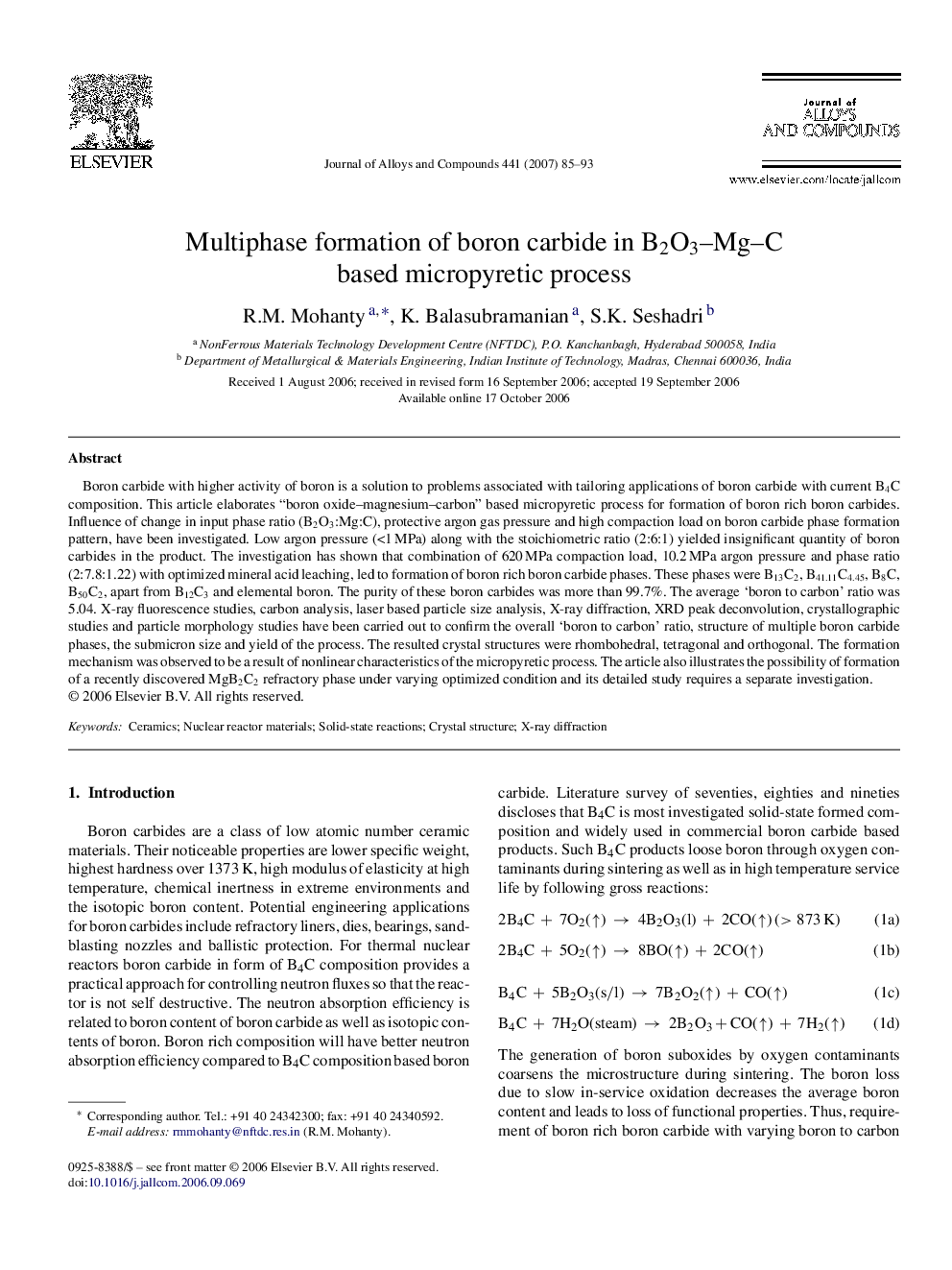| Article ID | Journal | Published Year | Pages | File Type |
|---|---|---|---|---|
| 1625721 | Journal of Alloys and Compounds | 2007 | 9 Pages |
Boron carbide with higher activity of boron is a solution to problems associated with tailoring applications of boron carbide with current B4C composition. This article elaborates “boron oxide–magnesium–carbon” based micropyretic process for formation of boron rich boron carbides. Influence of change in input phase ratio (B2O3:Mg:C), protective argon gas pressure and high compaction load on boron carbide phase formation pattern, have been investigated. Low argon pressure (<1 MPa) along with the stoichiometric ratio (2:6:1) yielded insignificant quantity of boron carbides in the product. The investigation has shown that combination of 620 MPa compaction load, 10.2 MPa argon pressure and phase ratio (2:7.8:1.22) with optimized mineral acid leaching, led to formation of boron rich boron carbide phases. These phases were B13C2, B41.11C4.45, B8C, B50C2, apart from B12C3 and elemental boron. The purity of these boron carbides was more than 99.7%. The average ‘boron to carbon’ ratio was 5.04. X-ray fluorescence studies, carbon analysis, laser based particle size analysis, X-ray diffraction, XRD peak deconvolution, crystallographic studies and particle morphology studies have been carried out to confirm the overall ‘boron to carbon’ ratio, structure of multiple boron carbide phases, the submicron size and yield of the process. The resulted crystal structures were rhombohedral, tetragonal and orthogonal. The formation mechanism was observed to be a result of nonlinear characteristics of the micropyretic process. The article also illustrates the possibility of formation of a recently discovered MgB2C2 refractory phase under varying optimized condition and its detailed study requires a separate investigation.
